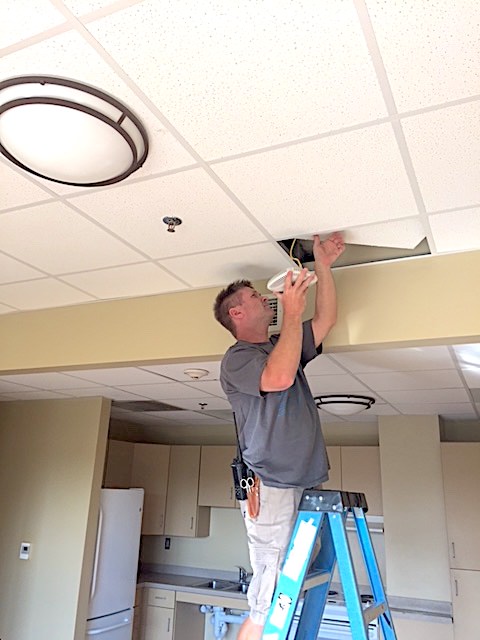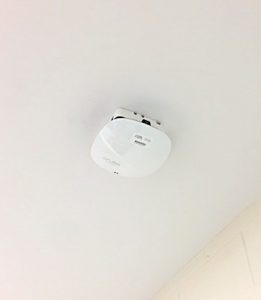
As Carolina students opt to use their smartphones for an increasing amount of their online needs, the Wi-Fi access points in the hallways of the University’s residence halls haven’t been able to keep up. The wireless system that ITS finished installing in the dorms three years ago was designed for the laptops of that time, which had a pretty robust ability to transmit and receive Wi-Fi power.
Demand has escalated
Since then, as a way to increase battery life, manufacturers reduced the transmitting and receiving power of their devices. Meanwhile, the number of wireless-dependent devices each student brings to campus has proliferated, escalating demand on the system. As a result, those hallway signals couldn’t always reach all the way back into the corners of the bedrooms.
To satisfy students’ wireless needs, ITS Communication Technologies has installed a denser Wi-Fi system in the residence halls, in coordination with ITS ResNET and the Department of Housing & Residential Education. Each room or suite received a Wi-Fi connection. ITS started with the locations that had the most feedback about trouble spots. Work on Baity Hill apartments, which were the first priority, ran from February to April 2017. ITS installed 400 additional wireless access points in Baity Hill.
For the second-priority locations, ITS installed 535 additional wireless access points collectively in Craige North, Hardin, Horton, Koury and Ram Village buildings 1-5. This work was accomplished during the 2017 summer break.

Students expect Wi-Fi everywhere
Wireless used to be just for mobile devices. But now, said Todd Lane, a Network Specialist with Communication Technologies, “Wi-Fi is becoming the primary means for people connecting to the internet.” Students, he added, “are used to it being in the air and connecting to it.”
They don’t use the existing wired connections in the walls of their dorms. In fact, many students don’t know what a wired connection is. Besides, many desktop and other machines don’t come with internal Ethernet any longer.
Re-purposing cable saved money and time
Because the wired connections are no longer needed, ITS re-purposed the cable, saving money and time. ITS took out one wired connection per bedroom and replaced it with a wireless access point.
Students will have a strong Wi-Fi connection wherever they are in their room. “They won’t experience network connection problems like they did in the past,” Lane said.
